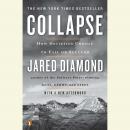

Even in apparently simple cases such as those of Easter Island or Henderson Island, whose societies declined or disappeared in isolation from other societies, a purely environmental explanation wouldn’t be sufficient: one also has to understand the political, economic, and social factors that prevented the society from solving its environmental problems. The next complication is that it’s obvious from the outset that different societies may collapse for different reasons, and that there are likely to be multiple factors contributing to the collapse of any given individual society. in the year 2008, or the temporary population decline of Ireland during the potato famine of 1846 – 1851, as meriting the term “collapse.” For the purposes of my book, I adopted a common-sense working definition: “A drastic decrease in human population size and/or political/economic/social complexity, over a considerable area, for an extended time.”

At the opposite extreme, most people wouldn’t consider the temporary economic downturn of the U.S. A definition requiring that all members of a society end up dead, while that may have actually happened to the Greenland Norse and the Henderson Islanders, would be too extreme, because it would exclude most of the cases that most scholars and lay people would recognize as collapses. Buy Collapsefactors in many of these collapses.īut this subject is much more complicated than a simple story of “It got cold, and they chopped down all their trees, so they starved to death.” One has to begin by defining how drastic a decline must be to merit being termed a collapse.


 0 kommentar(er)
0 kommentar(er)
